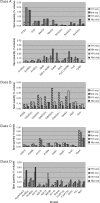Versatile metabolic adaptations of Ralstonia eutropha H16 to a loss of PdhL, the E3 component of the pyruvate dehydrogenase complex
- PMID: 21296938
- PMCID: PMC3067459
- DOI: 10.1128/AEM.02360-10
Versatile metabolic adaptations of Ralstonia eutropha H16 to a loss of PdhL, the E3 component of the pyruvate dehydrogenase complex
Abstract
A previous study reported that the Tn5-induced poly(3-hydroxybutyric acid) (PHB)-leaky mutant Ralstonia eutropha H1482 showed a reduced PHB synthesis rate and significantly lower dihydrolipoamide dehydrogenase (DHLDH) activity than the wild-type R. eutropha H16 but similar growth behavior. Insertion of Tn5 was localized in the pdhL gene encoding the DHLDH (E3 component) of the pyruvate dehydrogenase complex (PDHC). Taking advantage of the available genome sequence of R. eutropha H16, observations were verified and further detailed analyses and experiments were done. In silico genome analysis revealed that R. eutropha possesses all five known types of 2-oxoacid multienzyme complexes and five DHLDH-coding genes. Of these DHLDHs, only PdhL harbors an amino-terminal lipoyl domain. Furthermore, insertion of Tn5 in pdhL of mutant H1482 disrupted the carboxy-terminal dimerization domain, thereby causing synthesis of a truncated PdhL lacking this essential region, obviously leading to an inactive enzyme. The defined ΔpdhL deletion mutant of R. eutropha exhibited the same phenotype as the Tn5 mutant H1482; this excludes polar effects as the cause of the phenotype of the Tn5 mutant H1482. However, insertion of Tn5 or deletion of pdhL decreases DHLDH activity, probably negatively affecting PDHC activity, causing the mutant phenotype. Moreover, complementation experiments showed that different plasmid-encoded E3 components of R. eutropha H16 or of other bacteria, like Burkholderia cepacia, were able to restore the wild-type phenotype at least partially. Interestingly, the E3 component of B. cepacia possesses an amino-terminal lipoyl domain, like the wild-type H16. A comparison of the proteomes of the wild-type H16 and of the mutant H1482 revealed striking differences and allowed us to reconstruct at least partially the impressive adaptations of R. eutropha H1482 to the loss of PdhL on the cellular level.
Figures





Similar articles
-
Effects of homologous phosphoenolpyruvate-carbohydrate phosphotransferase system proteins on carbohydrate uptake and poly(3-Hydroxybutyrate) accumulation in Ralstonia eutropha H16.Appl Environ Microbiol. 2011 Jun;77(11):3582-90. doi: 10.1128/AEM.00218-11. Epub 2011 Apr 8. Appl Environ Microbiol. 2011. PMID: 21478317 Free PMC article.
-
Dihydrolipoamide dehydrogenases of Advenella mimigardefordensis and Ralstonia eutropha catalyze cleavage of 3,3'-dithiodipropionic acid into 3-mercaptopropionic acid.Appl Environ Microbiol. 2010 Nov;76(21):7023-8. doi: 10.1128/AEM.01706-10. Epub 2010 Sep 10. Appl Environ Microbiol. 2010. PMID: 20833784 Free PMC article.
-
Genome-wide transcriptome analyses of the 'Knallgas' bacterium Ralstonia eutropha H16 with regard to polyhydroxyalkanoate metabolism.Microbiology (Reading). 2010 Jul;156(Pt 7):2136-2152. doi: 10.1099/mic.0.038380-0. Epub 2010 Apr 15. Microbiology (Reading). 2010. PMID: 20395272
-
Design of inducible expression vectors for improved protein production in Ralstonia eutropha H16 derived host strains.J Biotechnol. 2016 Oct 10;235:92-9. doi: 10.1016/j.jbiotec.2016.04.026. Epub 2016 Apr 13. J Biotechnol. 2016. PMID: 27085887 Review.
-
Recent advances in synthetic biology toolkits and metabolic engineering of Ralstonia eutropha H16 for production of value-added chemicals.Biotechnol Adv. 2025 Mar-Apr;79:108516. doi: 10.1016/j.biotechadv.2025.108516. Epub 2025 Jan 9. Biotechnol Adv. 2025. PMID: 39793936 Review.
Cited by
-
Detection of phase-dependent transcriptomic changes and Rubisco-mediated CO2 fixation into poly (3-hydroxybutyrate) under heterotrophic condition in Ralstonia eutropha H16 based on RNA-seq and gene deletion analyses.BMC Microbiol. 2013 Jul 23;13:169. doi: 10.1186/1471-2180-13-169. BMC Microbiol. 2013. PMID: 23879744 Free PMC article.
-
A closer look on the polyhydroxybutyrate- (PHB-) negative phenotype of Ralstonia eutropha PHB-4.PLoS One. 2014 May 2;9(5):e95907. doi: 10.1371/journal.pone.0095907. eCollection 2014. PLoS One. 2014. PMID: 24787649 Free PMC article.
-
Proteomic analysis of the influence of Cu(2+) on the crystal protein production of Bacillus thuringiensis X022.Microb Cell Fact. 2015 Oct 5;14:153. doi: 10.1186/s12934-015-0339-9. Microb Cell Fact. 2015. PMID: 26438125 Free PMC article.
-
Minimal genome encoding proteins with constrained amino acid repertoire.Nucleic Acids Res. 2013 Oct;41(18):8444-51. doi: 10.1093/nar/gkt610. Epub 2013 Jul 19. Nucleic Acids Res. 2013. PMID: 23873957 Free PMC article.
-
Engineering Cupriavidus necator H16 for the autotrophic production of (R)-1,3-butanediol.Metab Eng. 2021 Sep;67:262-276. doi: 10.1016/j.ymben.2021.06.010. Epub 2021 Jul 2. Metab Eng. 2021. PMID: 34224897 Free PMC article.
References
-
- Aevarsson, A., K. Seger, S. Turley, J. R. Sokatch, and W. G. Hol. 1999. Crystal structure of 2-oxoisovalerate and dehydrogenase and the architecture of 2-oxo acid dehydrogenase multienzyme complexes. Nat. Struct. Biol. 6:785-792. - PubMed
-
- Aragno, M., A. Walther-Mauruschat, F. Mayer, and H. G. Schlegel. 1977. Micromorphology of Gram-negative hydrogen bacteria. I. Cell morphology and flagellation. Arch. Microbiol. 114:93-100. - PubMed
-
- Berg, A., and A. de Kok. 1997. 2-Oxoacid dehydrogenase multienzyme complexes. The central role of the lipoyl domain. Biol. Chem. 378:617-634. - PubMed
Publication types
MeSH terms
Substances
LinkOut - more resources
Full Text Sources
Molecular Biology Databases

